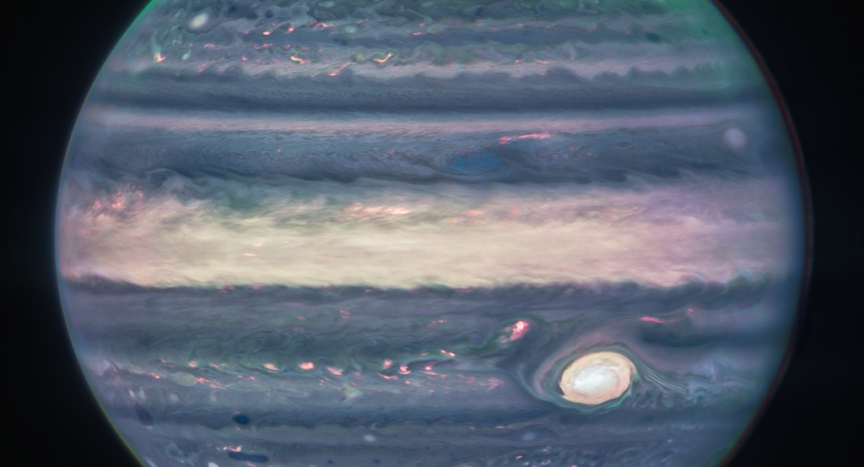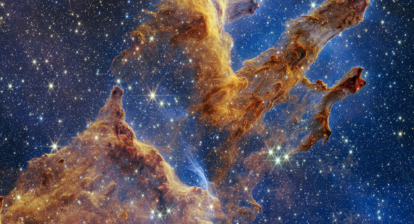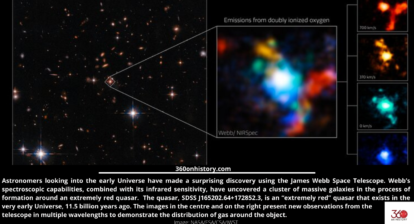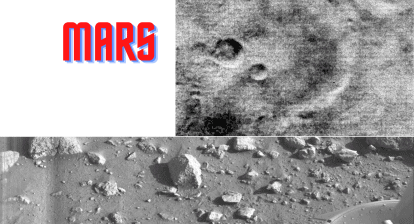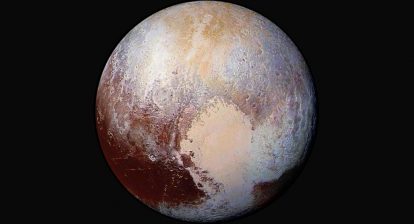We always knew that the James Webb Telescope (JWST) would give us amazing views of the cosmos but it is still fantastic to see those views in reality. Once again, JWST has shown has the beauty of our Universe in vivid detail. This time it has captured giant storms, powerful winds and auroras on the giant of the solar system: Jupiter. These observations by humanity’s latest space telescope will giver scientists more information on Jupiter.
“We hadn’t really expected it to be this good, to be honest,” said planetary astronomer Imke de Pater, professor emerita of the University of California, Berkeley. De Pater led the observations of Jupiter with Thierry Fouchet, a professor at the Paris Observatory, as part of an international collaboration for Webb’s Early Release Science program. “It’s really remarkable that we can see details on Jupiter together with its rings, tiny satellites, and even galaxies in one image,” she said.
(Read Europa has signs of liquid water and is a prime candidate for life)
These two latest images were captured by the observatory’s Near-Infrared Camera (NIRCam), which has three specialized infrared filters. Infrared light is invisible to the human eye. To make it visible it has been mapped onto the visible spectrum, showcasing the amazing details of the gas giant. “Generally, the longest wavelengths appear redder and the shortest wavelengths are shown as more blue,” according to the NASA blogpost.
(Fantastic images of Jupiter by JunoCam)
“In the standalone view of Jupiter, created from a composite of several images from Webb, auroras extend to high altitudes above both the northern and southern poles of Jupiter. The auroras shine in a filter that is mapped to redder colors, which also highlights light reflected from lower clouds and upper hazes. A different filter, mapped to yellows and greens, shows hazes swirling around the northern and southern poles. A third filter, mapped to blues, showcases light that is reflected from a deeper main cloud.The Great Red Spot, a famous storm so big it could swallow Earth, appears white in these views, as do other clouds, because they are reflecting a lot of sunlight,” details NASA.
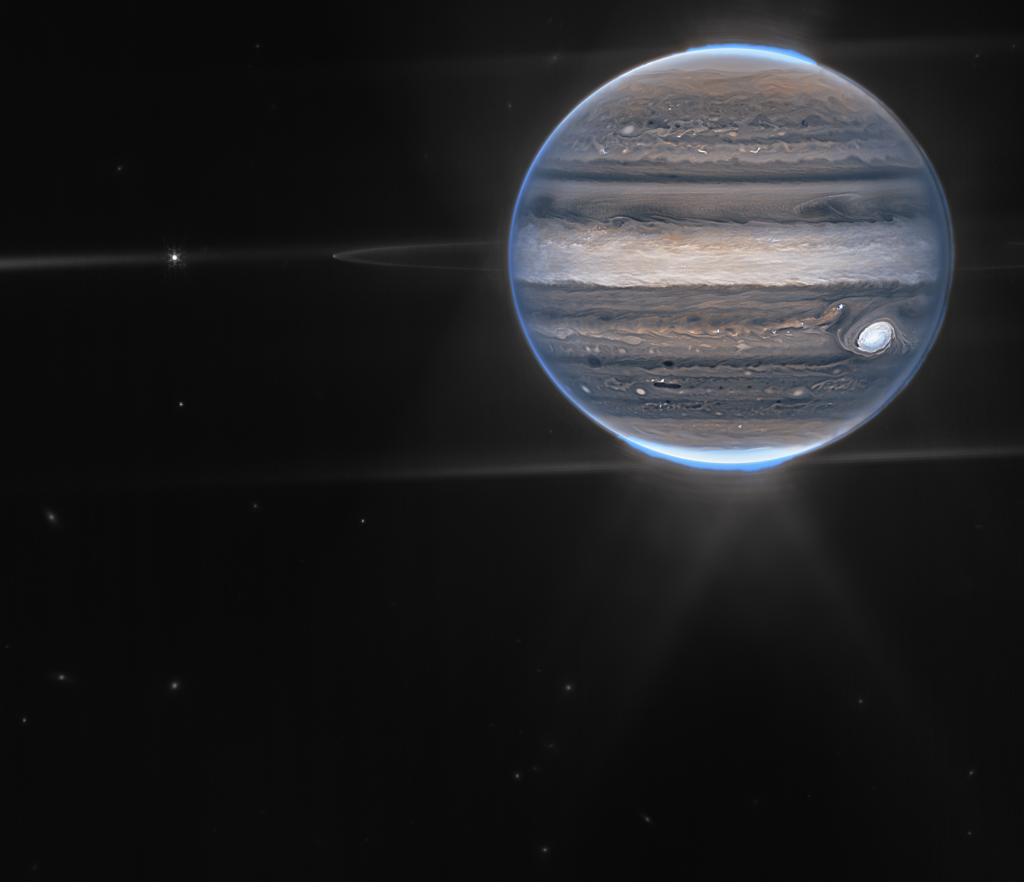
Webb NIRCam composite image from two filters – F212N (orange) and F335M (cyan) – of Jupiter system, unlabeled (top) and labeled (bottom). Credit: NASA, ESA, CSA, Jupiter ERS Team; image processing by Ricardo Hueso (UPV/EHU) and Judy Schmidt.
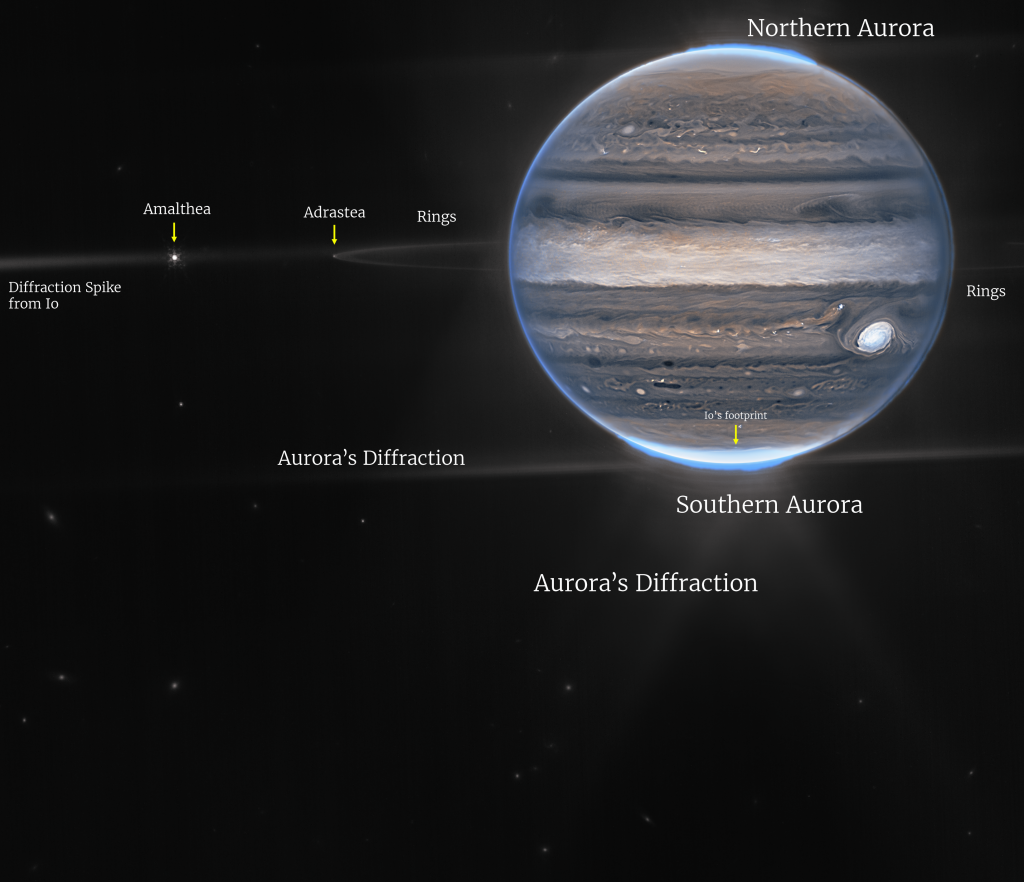
Webb NIRCam composite image from two filters – F212N (orange) and F335M (cyan) – of Jupiter system. This high-resolution infrared image of Jupiter from the new James Webb Space Telescope (Webb) reveals previously unknown differences between high-floating bright clouds — including the Great Red Spot — and low-lying dark clouds. Also clearly visible are Jupiter’s dust ring, bright auroras at the poles, and Jupiter’s moons Amalthea and Adrastea. Click on link in bio to read more and see other pictures. Credit: NASA, ESA, CSA, Jupiter ERS Team; image processing by Ricardo Hueso (UPV/EHU) and Judy Schmidt.
Scientists collaborated with citizen scientist Judy Schmidt to translate the Webb data into images.
The James Webb Space Telescope is an international mission led by NASA with its partners ESA (European Space Agency) and CSA (Canadian Space Agency). It was launched on December 25, 2021. After deploying in space and alignment and calibration of the mirrors and instruments, JWST it has been ready for science operations since summer of 2022.
Credit: NASA, ESA, CSA, Jupiter ERS Team; image processing by Judy Schmidt.
